Conceptual Study of Vernier Generator and Rectifier Association for Low Power Wind Energy Systems
Abstract
:1. Introduction
2. The Vertical Axis Wind Turbine
2.1. Characterization of the Turbine
2.2. Generator for the Middle Wind Turbine Characterization of the Turbine
- rated torque TTn = 270 Nm;
- rated speed NTn = 54 rpm;
- rated power PTn = 1.5 kW.
3. The Permanent Magnet Vernier Machine
3.1. Principle of Permanent Magnet Vernier Machine
3.2. Example of Permanent Magnet Vernier Machine Prototype
- p = 2;
- Ns = 24 stator teeth;
- Nr = 22 pairs of magnets;
- Xs synchronous inductance: 61.2 mH;
- The electromotrice force (e.m.f.) amplitude varies linearly with the rotating speed (emf coefficient: 0.825 V/rad/s).
4. Sizing of Generator
4.1. Introduction
4.2. Estimate of Losses and Temperature Rise Product
4.3. Results of Analitical Sizing
- the form factor Kf;
- the number of slots per pole and per phase;
- the number of stator poles;
- λ0 (for the classical synchronous machine) or H (for the Vernier structure);
- the thickness of magnets and by taking into account mechanic and electromagnetic limiting factors;
- demagnetization constraint of magnets;
- slot pitch > 5 mm;
- maximum frequency: e.g., 400 Hz;
- thickness of the yoke;
- current density in armature winding J < 5 A/mm2.
5. Study of the Vernier Generator and Rectifier Association
5.1. Introduction
- Back-emf coefficient: Ke = 11.3 V/rad/s
- Stator inductance: Ls = 10.4 mH
- Stator resistance: Rs = 1.12 Ω.
5.2. Vernier Machine PWM Rectifier Association
5.3. Vernier Machine Diode Rectifier Association
5.3.1. Constant DC-Link Voltage
5.3.2. Variable DC-Link Voltage
5.3.3. Machine Optimization for a Diode Bridge Rectifier
- The second term of (22) is smaller than the first: using the simulation parameters listed in introduction of Section 5, we find that the second term of the expression Ω1 (2) represents about 8% of the first one.
- Ke is proportional to the number of winding turns, and LS are proportional to the number of turns squared. Thus, Ωlim is independent of this number of turns: changing the winding cannot improve system operation. Thus, if we want to modify Ωlim, we are interested at first by the first term Ω1 (1) of (22).
5.3.4. Improvement Brought by the Generator with a High Power Factor
6. Conclusions
Author Contributions
Funding
Institutional Review Board Statement
Informed Consent Statement
Data Availability Statement
Conflicts of Interest
References
- Chen, Z.; Guerrero, J.M.; Blaabjerg, F. A review of the state of the art of power electronics for wind turbines. IEEE Trans. Power Electron. 2009, 24, 1859–1875. [Google Scholar] [CrossRef]
- Milivojevic, N.; Stamenkovic, I.; Schofield, N. Power and Energy Analysis of Commercial Small Wind Turbine Systems. In Proceedings of the IEEE International Conference Industrial Technology (ICIT), Vina del Mar, Chile, 14–17 March 2010; pp. 1739–1744. [Google Scholar] [CrossRef]
- Corbus, D.; Baring-Gould, I.; Drouilhet, S.; Jimenez, T.; Newcomb, C.; Flowers, L. Small wind turbine testing and develop-ment applications. In Proceedings of the WindPower’99, Burlington, VT, USA, 20–23 June 1999. AC36-99GO10337. [Google Scholar]
- Ani, S.O.; Polinder, H.; Ferreira, J.A. Comparison of Energy Yield of Small Wind Turbines in Low Wind Speed Areas. IEEE Trans. Sustain. Energy 2012, 4, 42–49. [Google Scholar] [CrossRef]
- Modi, V.J.; Fernando, U.K. On the performance of the Savonius wind turbine. J. Sol. Energy Eng. 1998, 111, 71–81. [Google Scholar] [CrossRef]
- Llibre, J.F.; Matt, D. A Cylindrical Vernier Reluctance Permanent-Magnet Machine. Electromotion J. 1998, 5, 35–39. [Google Scholar]
- Lipo, T.; Toba, A. Generic torque-maximizing design methodology of surface permanent-magnet vernier machine. IEEE Trans. Ind. Appl. 2000, 36, 1539–1546. [Google Scholar] [CrossRef]
- Mény, I.; Enrici, P.; Huselstein, J.J.; Matt, D. Direct driven synchronous generator for wind turbines (Vernier reluctance magnet machine). In Proceedings of the ICEM’2004, Cracovie, Pologne, 5–8 September 2004. [Google Scholar]
- Mény, I.; Enrici, P.; Didat, J.R.; Matt, D. Analytical dimensioning of a direct-driven wind generator. Use of a variable reluc-tance magnet machine with Vernier effect. In Proceedings of the Electromotion 05, Lausanne, Switzerland, 27–29 July 2005. [Google Scholar]
- Llibre, J.F.; Matt, D. Performances comparées des machines à aimants et à réluctance variable. Maximisation du couple massique ou volumique. J. Phys. III 1995, 5, 1621–1641. [Google Scholar]
- Enrici, P.; Dumas, F.; Ziegler, N.; Matt, D. Design of a High-Performance Multi-Air Gap Linear Actuator for Aeronautical Applications. IEEE Trans. Energy Convers. 2016, 31, 896–905. [Google Scholar] [CrossRef]
- Hoang, E. Etude, modélisation et mesure des pertes magnétiques dans les moteurs à réluctance variable à double saillance. Ph.D. Thesis, Laboratoire d’Electricité, Signaux et Robotique (LESiR), Ecole normale Supérieure de Cachan, Cachan, France, 19 December 1995. [Google Scholar]
- Meny, I. Chaîne de Conversion Éolienne de Petite Puissance: Optimisation D’une Génératrice Spécifique à Entraînement Di-rect, Développement de la Chaîne de Conversion. Ph.D. Thesis, Department of Electrical Engineering, Université Montpellier, Montpellier, France, 6 July 2005. [Google Scholar]
- Matt, D.; Martirè, T.; Enrici, P.; Jac, J.; Ziegler, N. Passive Wind Energy Conversion System Association of a direct-driven synchronous motor with Vernier effect and a diode rectifier. In Proceedings of the Electrotechnical conference MELECON 2008, Ajaccio, France, 5–7 May 2008. [Google Scholar] [CrossRef]
- Wang, J.; Xu, D.; Wu, B.; Luo, Z. A Low-Cost Rectifier Topology for Variable-Speed High-Power PMSG Wind Turbines. IEEE Trans. Power Electron. 2011, 26, 2192–2200. [Google Scholar] [CrossRef]
- Kana, C.; Thamodharan, M.; Wolf, A. System management of a wind-energy converter. IEEE Trans. Power Electron. 2001, 16, 375–381. [Google Scholar] [CrossRef]
- Di Gerlando, A.; Foglia, G.; Iacchetti, M.F.; Perini, R. Analysis and Test of Diode Rectifier Solutions in Grid-Connected Wind Energy Conversion Systems Employing Modular Permanent-Magnet Synchronous Generators. IEEE Trans. Ind. Electron. 2011, 59, 2135–2146. [Google Scholar] [CrossRef]
- Baroudi, J.A.; Dinavahi, V.; Knight, A.M. A review of power converter topologies for wind generators. Renew. Energy 2007, 32, 2369–2385. [Google Scholar] [CrossRef]
- Mirecki, A.; Roboam, X.; Richardeau, F. Architecture Complexity and Energy Efficiency of Small Wind Turbines. IEEE Trans. Ind. Electron. 2007, 54, 660–670. [Google Scholar] [CrossRef]
- Wang, Q.; Chang, L. An Intelligent Maximum Power Extraction Algorithm for Inverter-Based Variable Speed Wind Turbine Systems. IEEE Trans. Power Electron. 2004, 19, 1242–1249. [Google Scholar] [CrossRef]
- Lumbreras, C.; Guerrero, J.M.; Garcia, P.; Briz, F.; Reigosa, D.D. Control of a Small Wind Turbine in the High Wind Speed Region. IEEE Trans. Power Electron. 2016, 31, 6980–6991. [Google Scholar] [CrossRef]
- Sunan, E.; Kucuk, F.; Goto, H.; Guo, H.-J.; Ichinokura, O. Three-Phase Full-Bridge Converter Controlled Permanent Magnet Reluctance Generator for Small-Scale Wind Energy Conversion Systems. IEEE Trans. Energy Convers. 2014, 29, 585–593. [Google Scholar] [CrossRef]
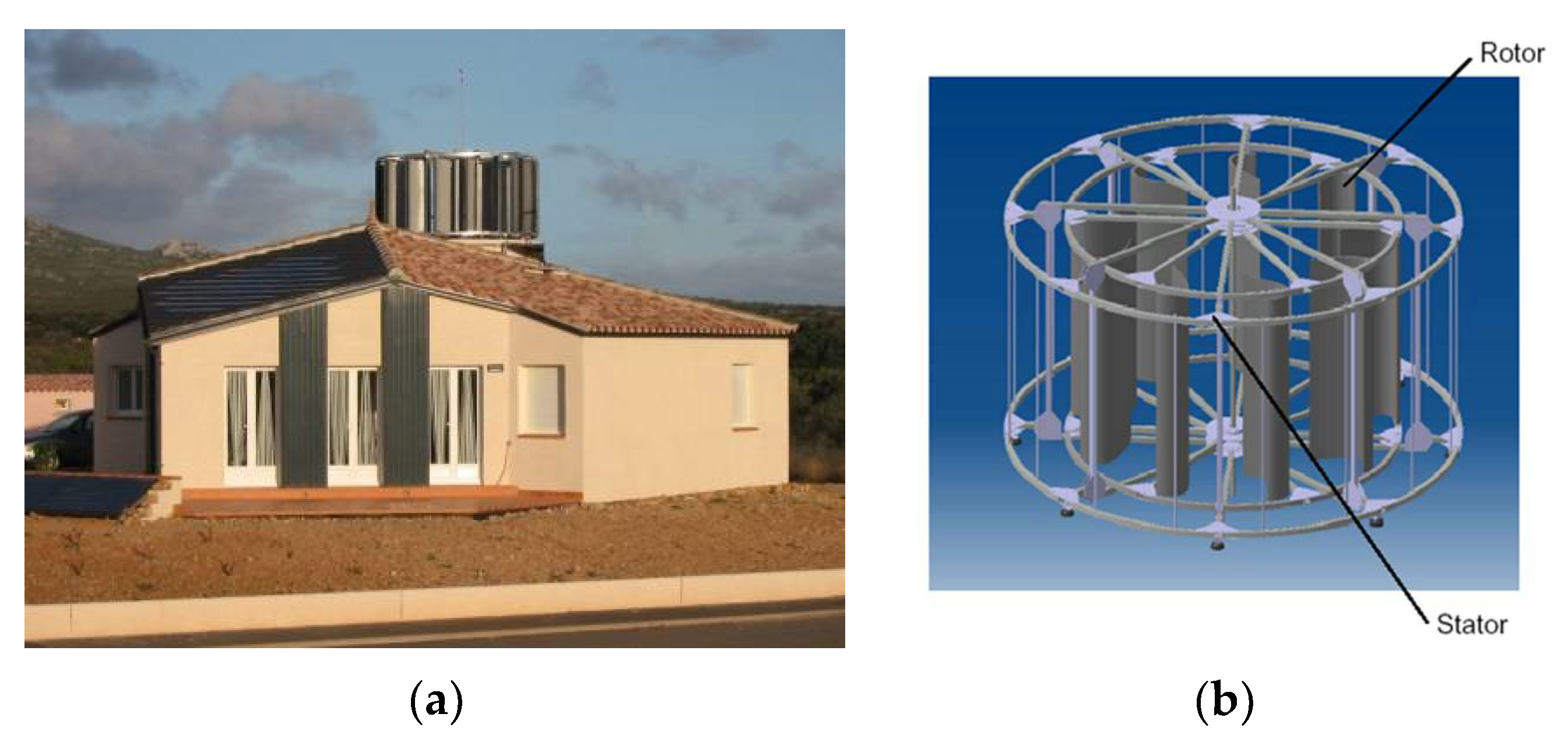
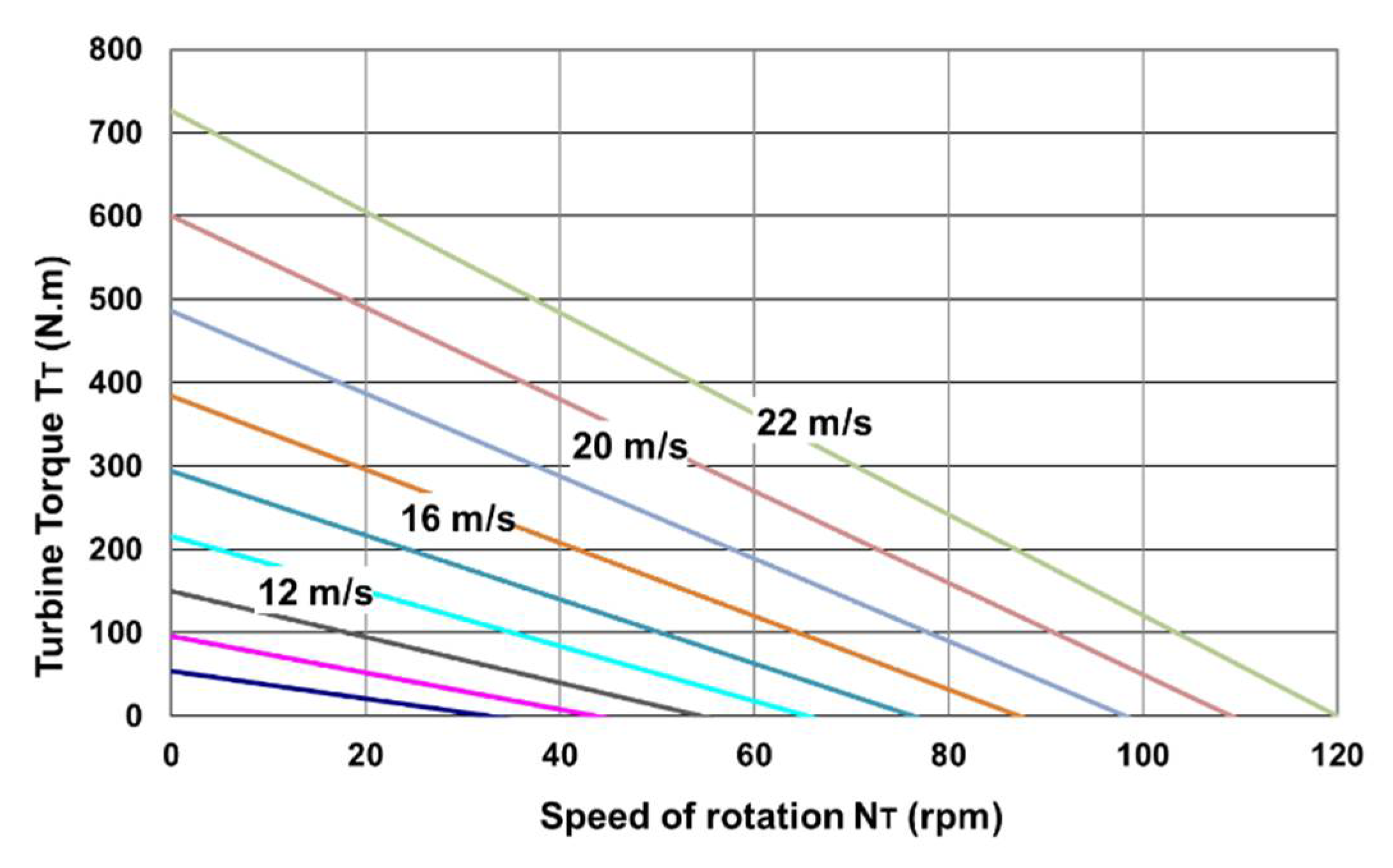
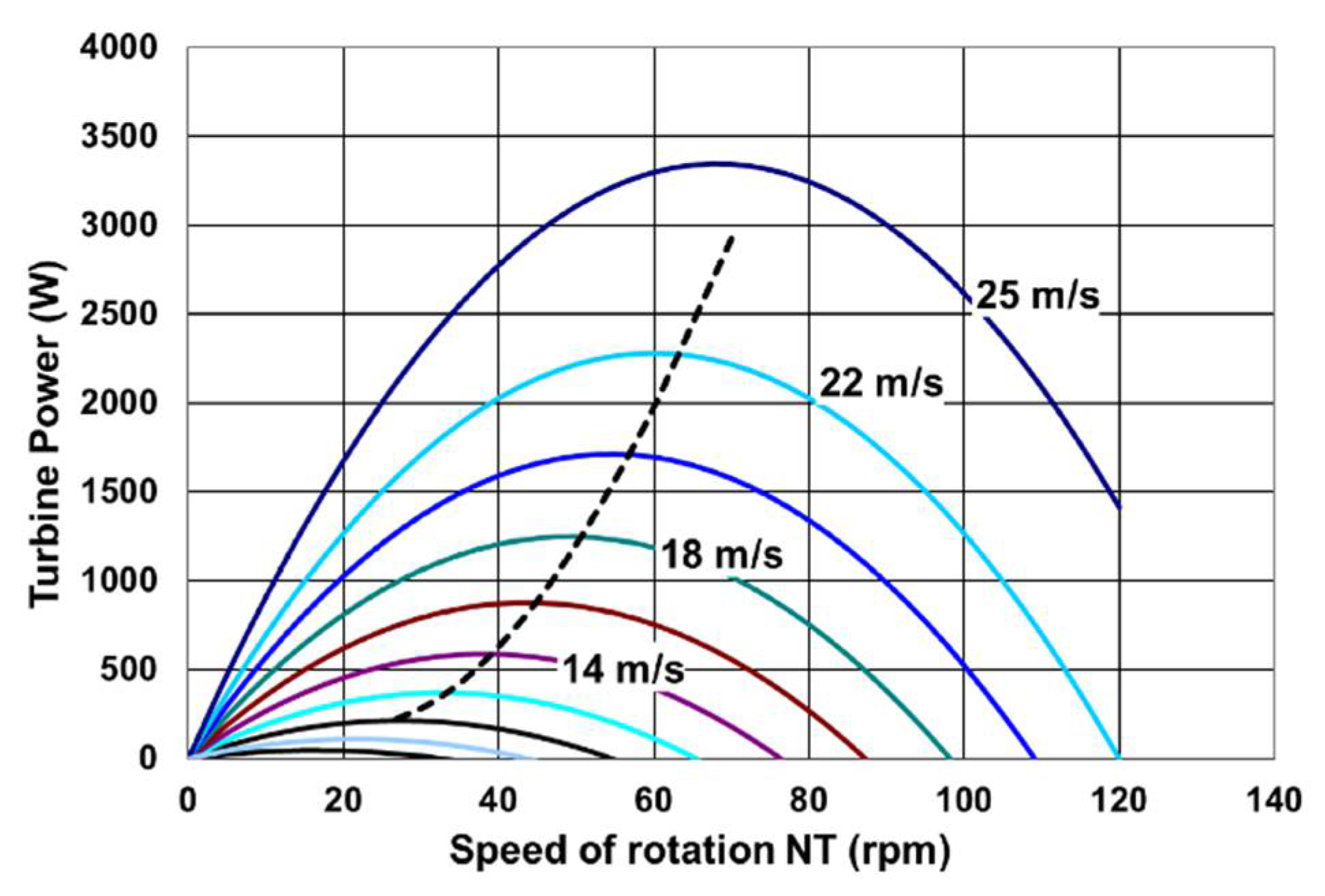

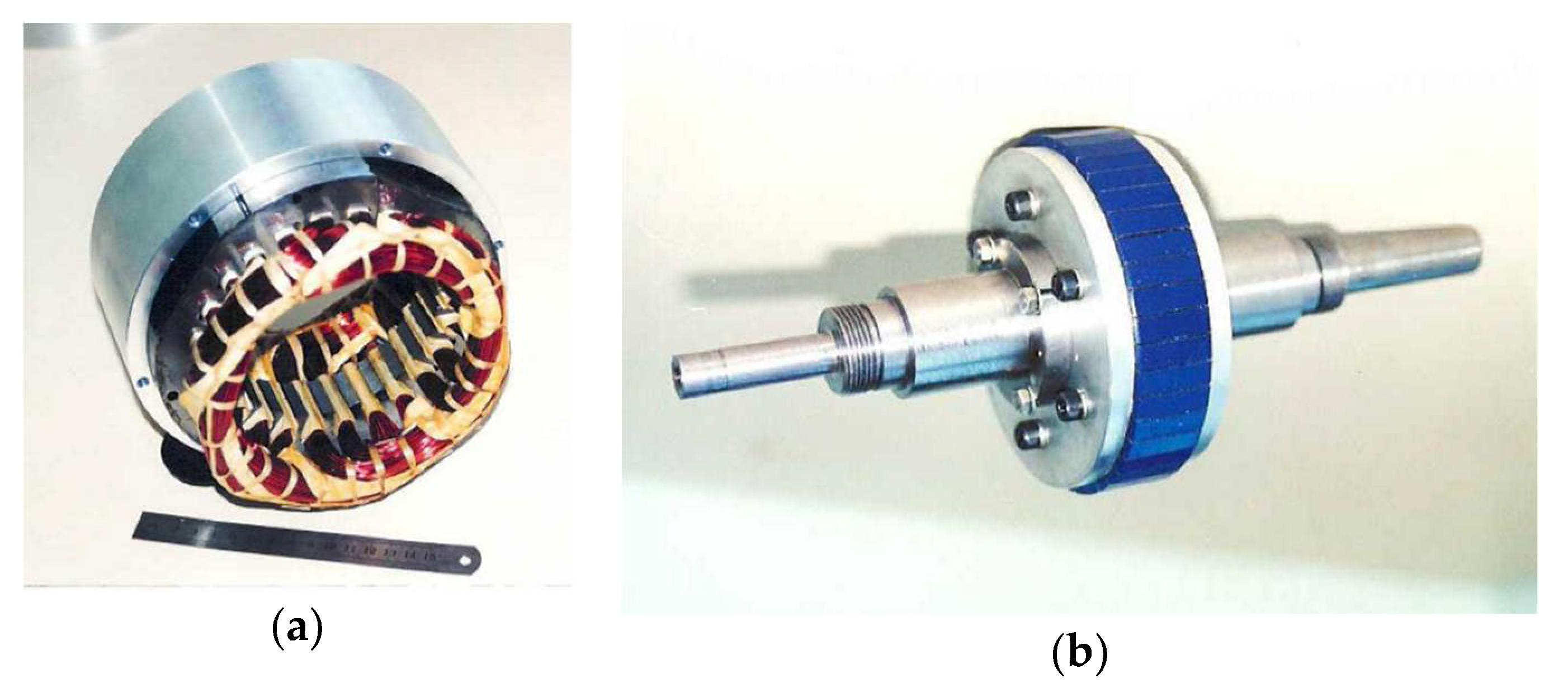
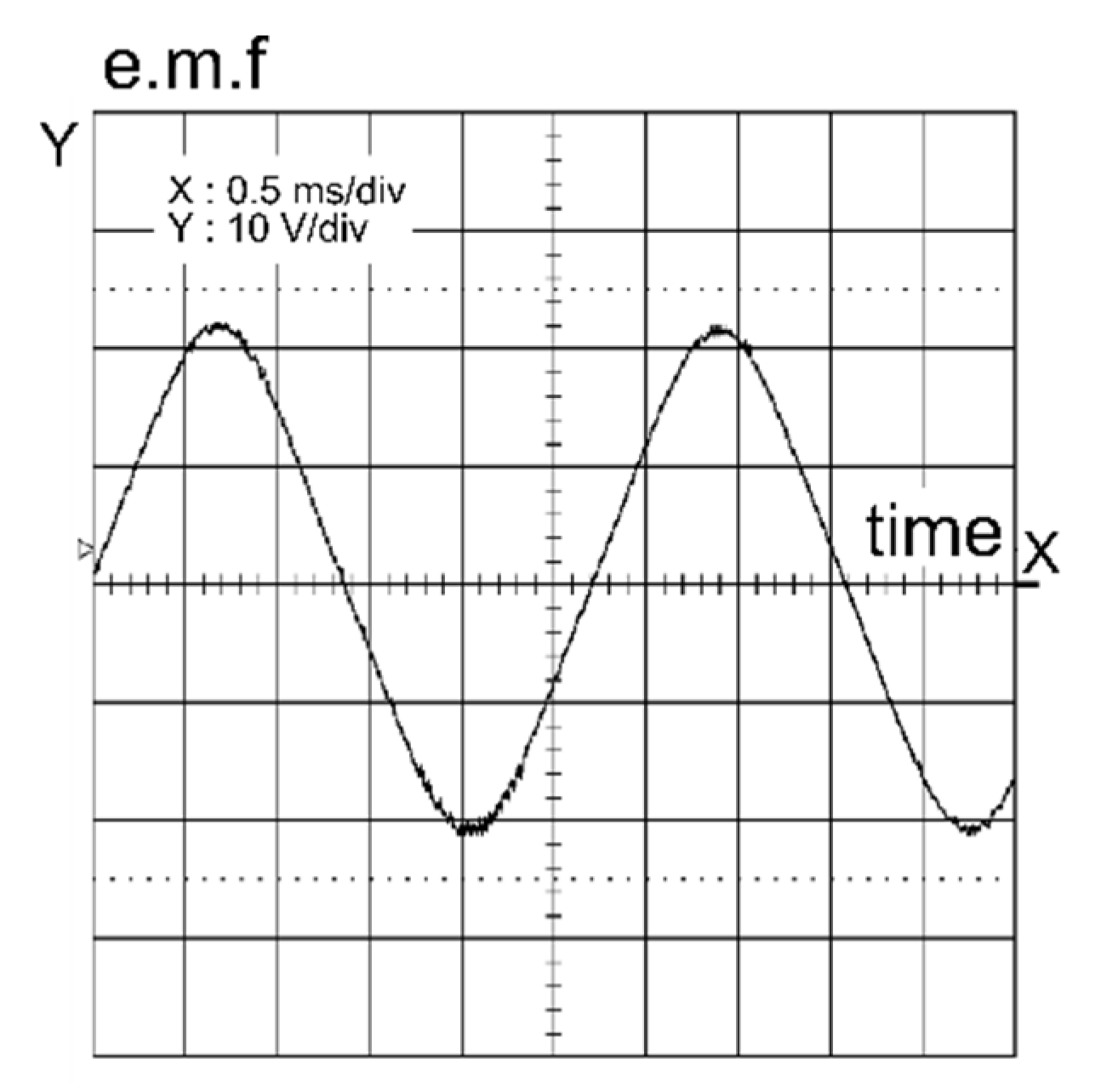
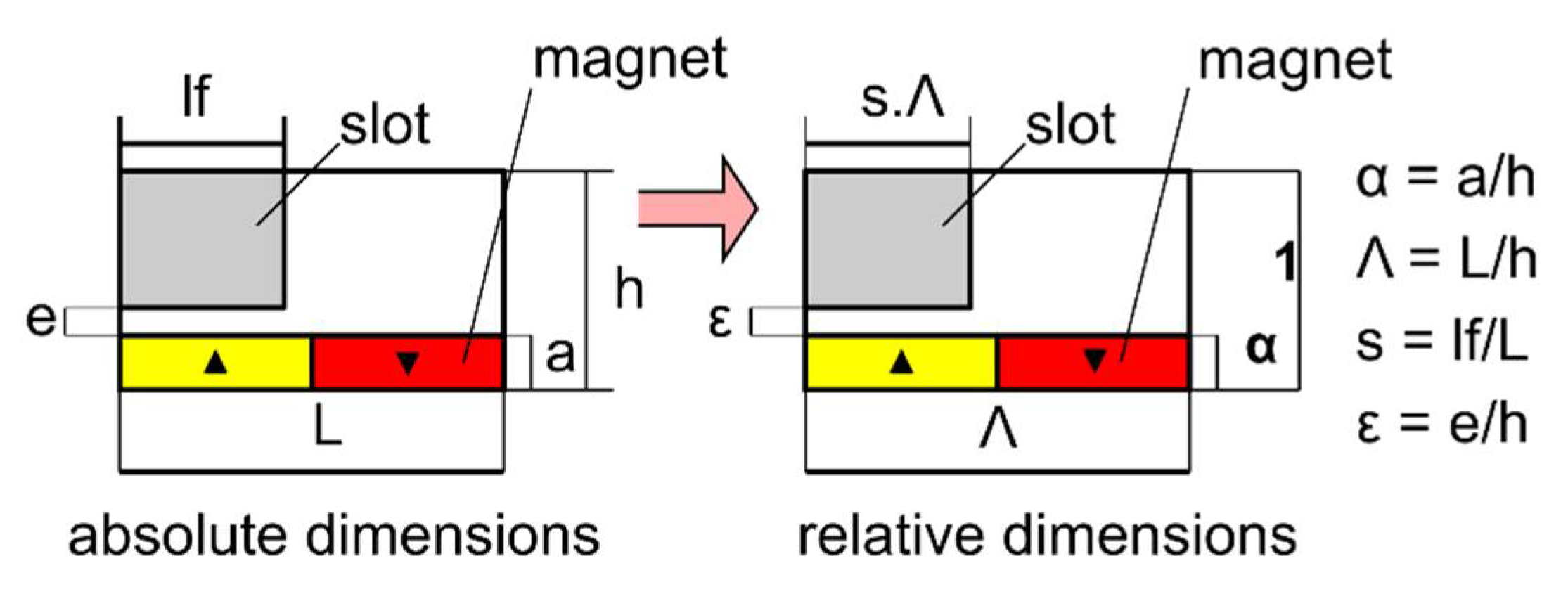


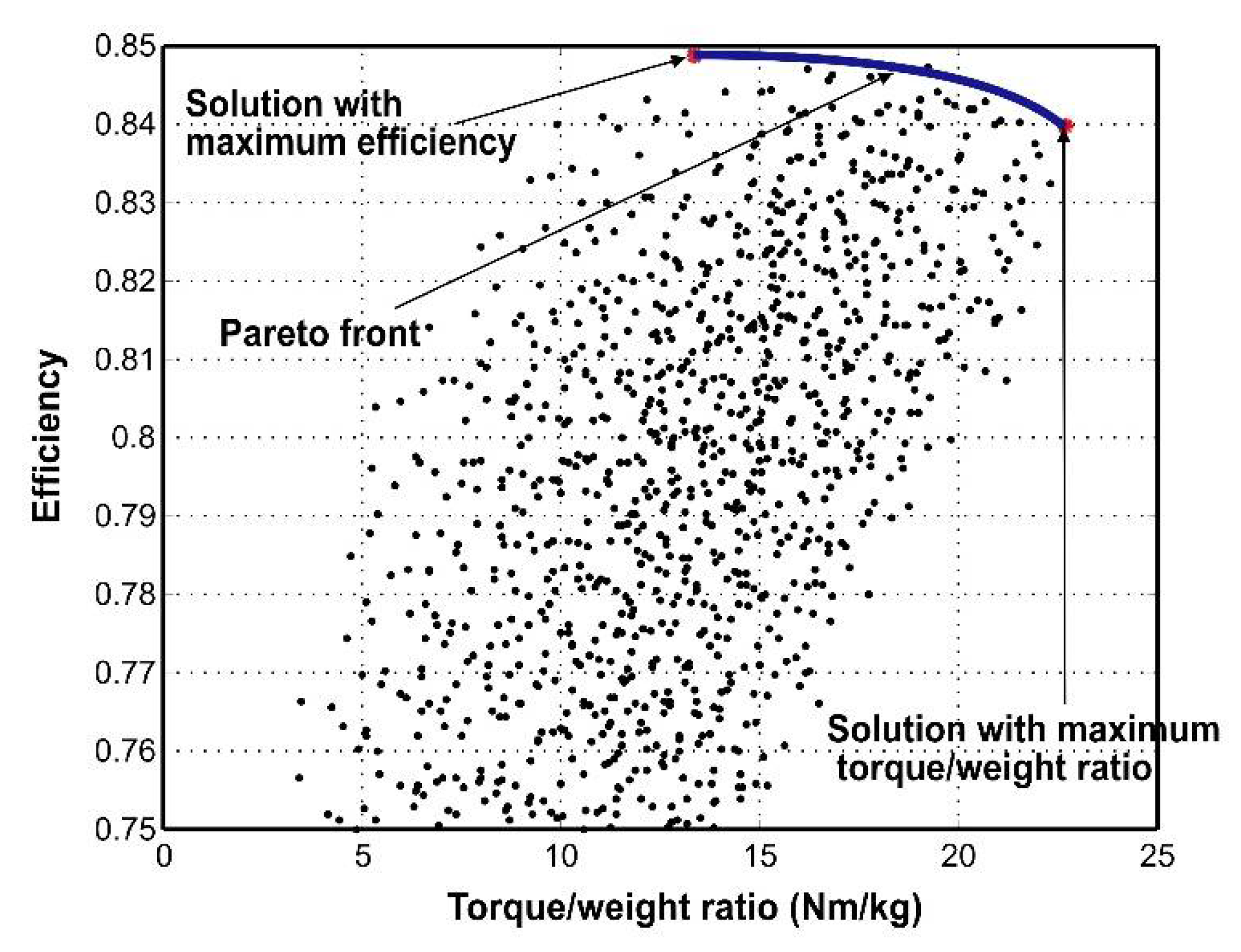
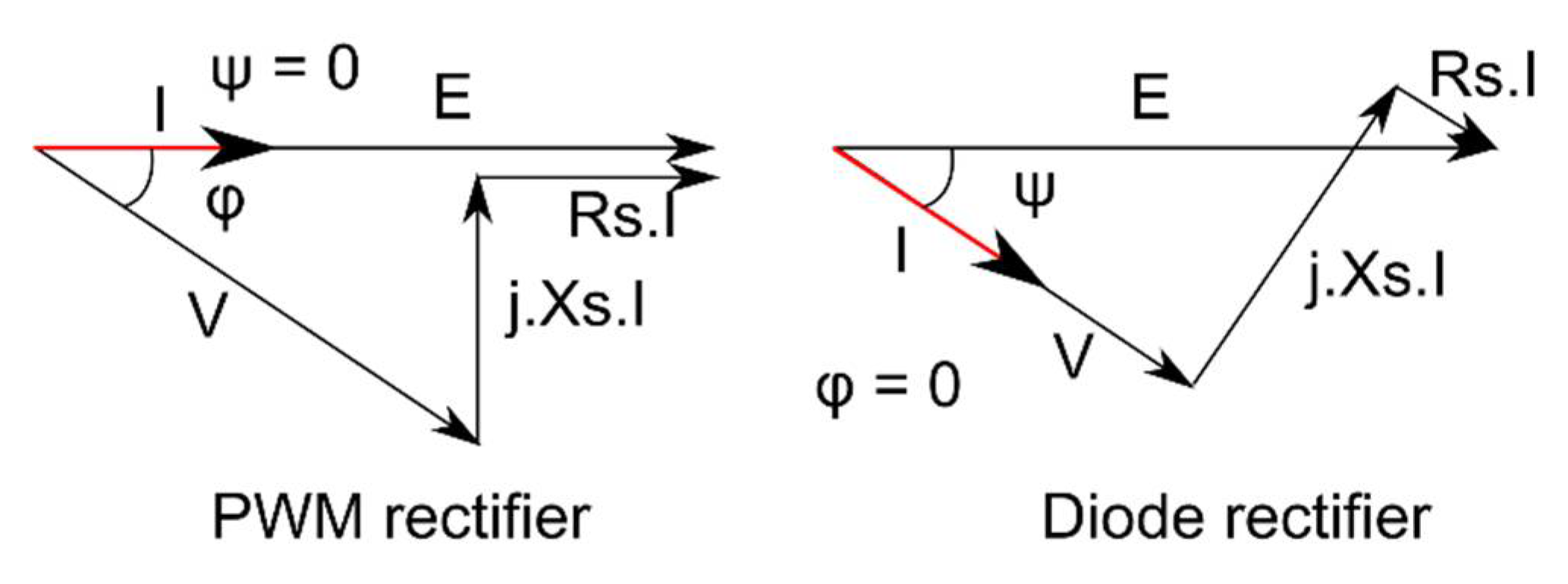


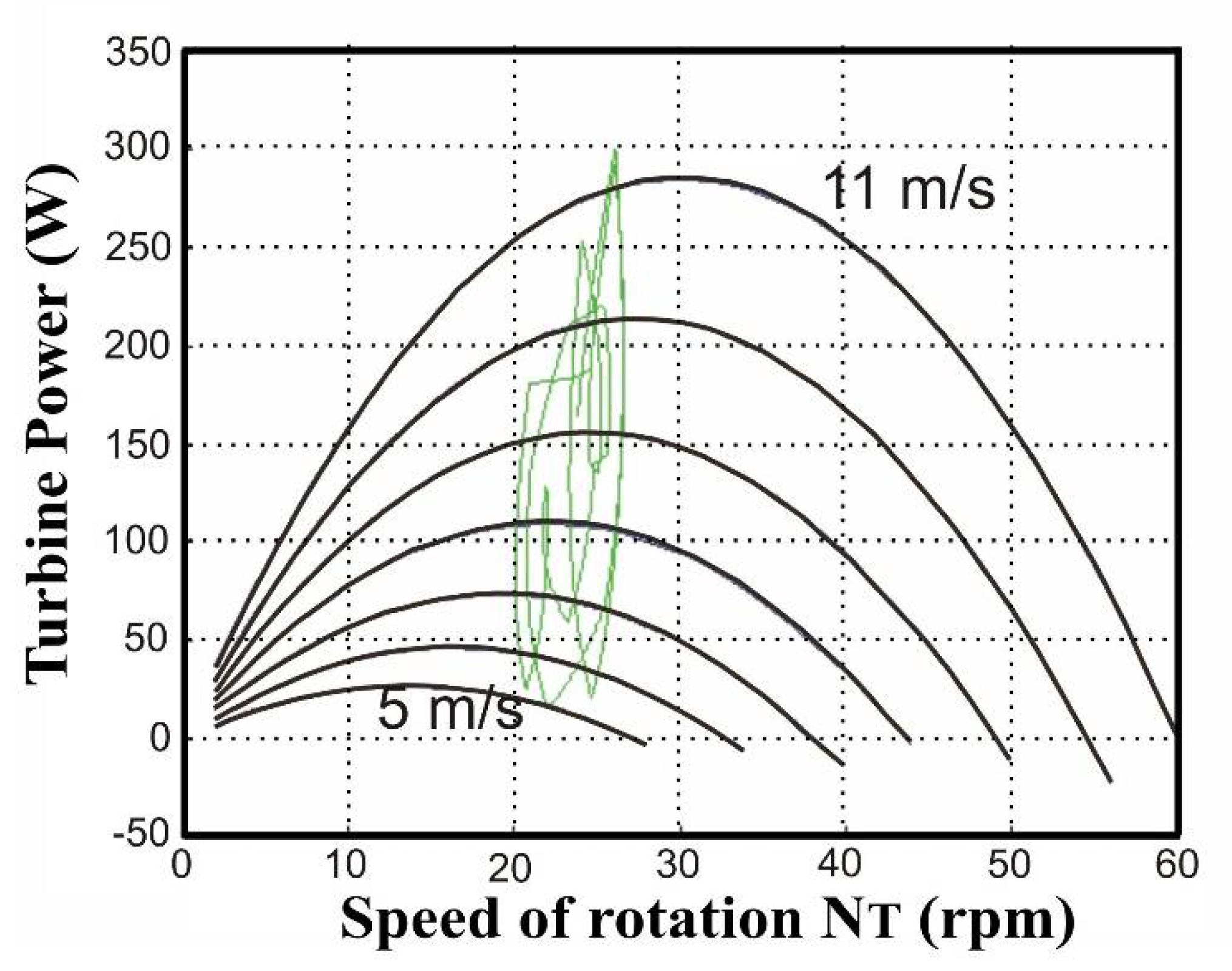
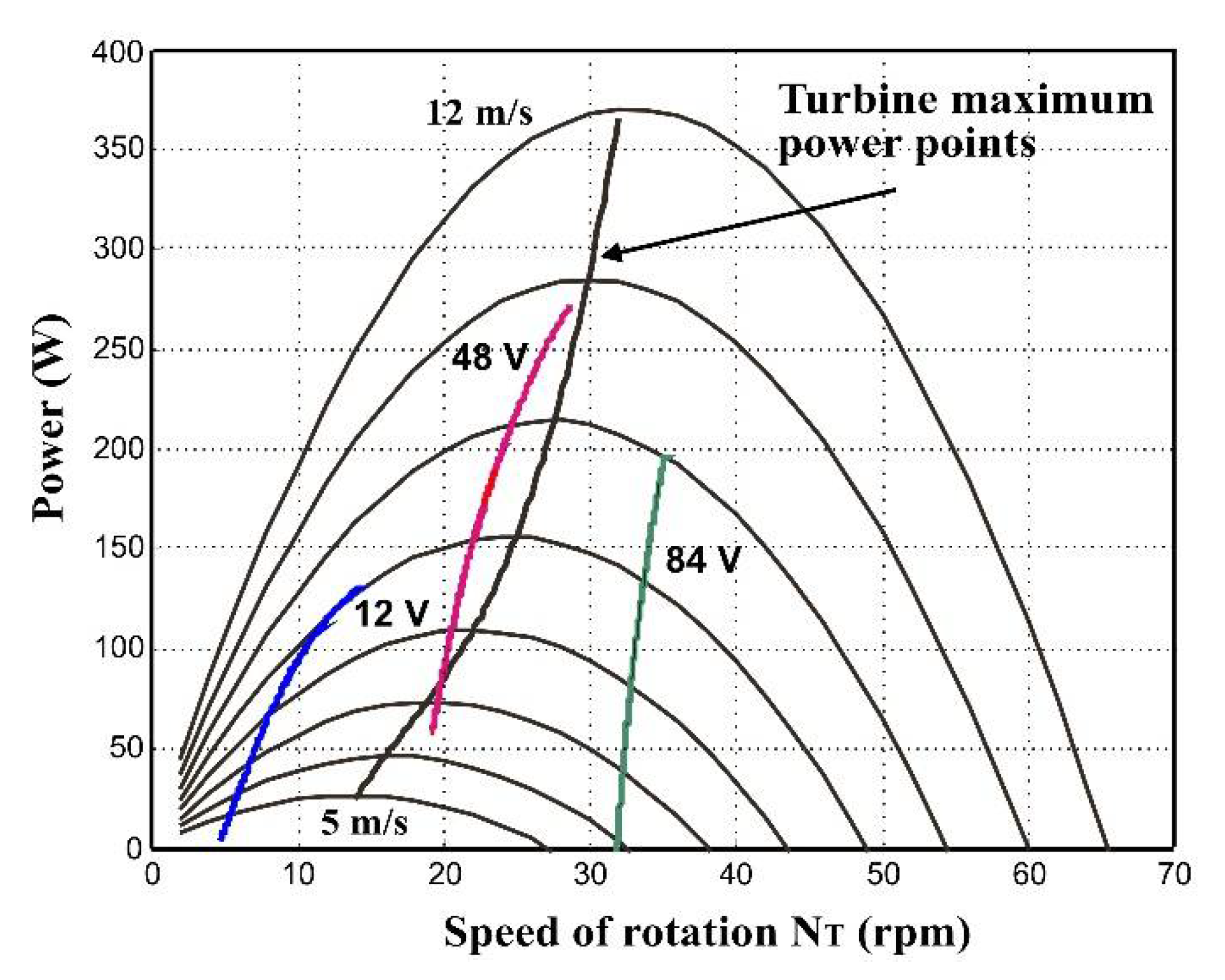
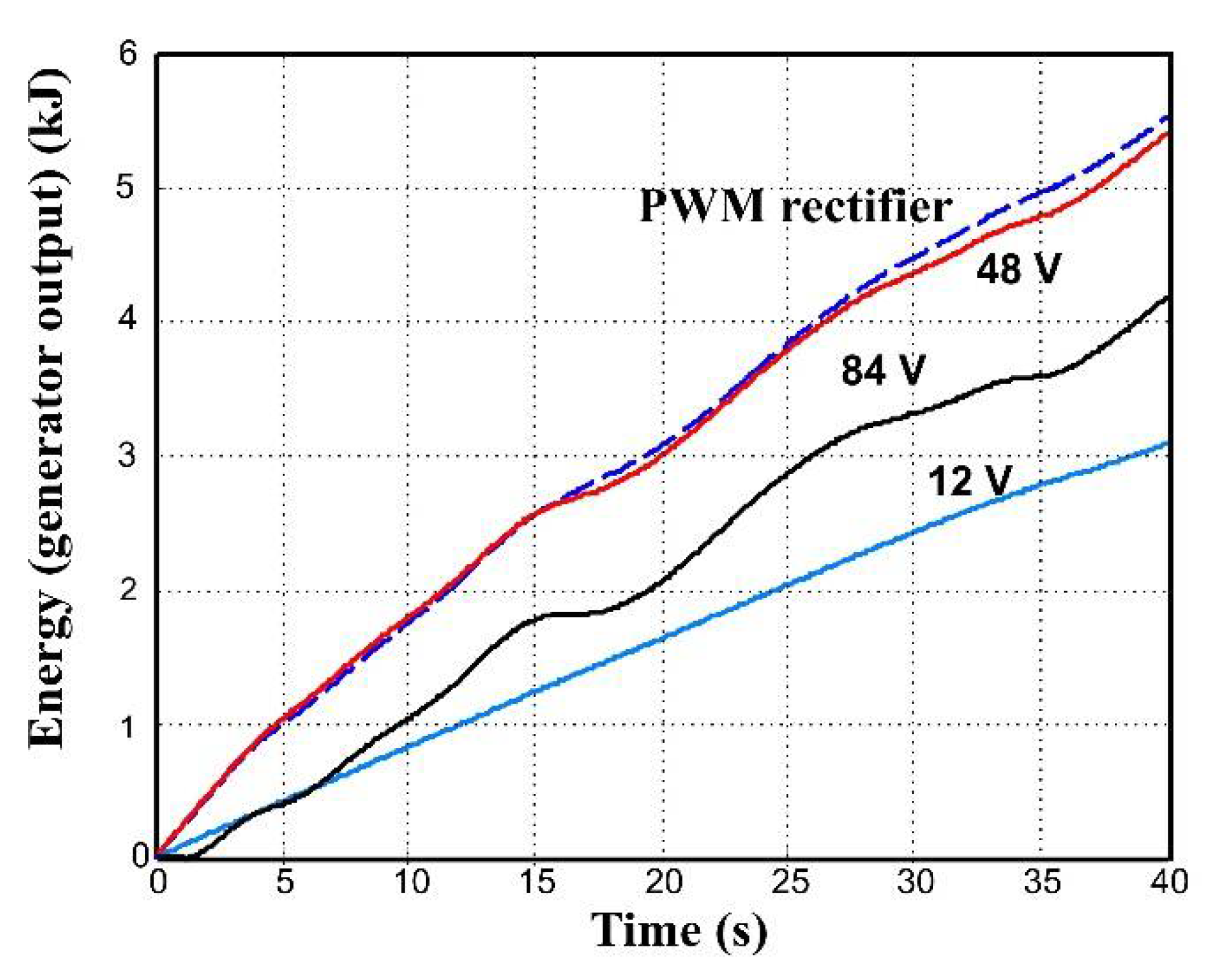
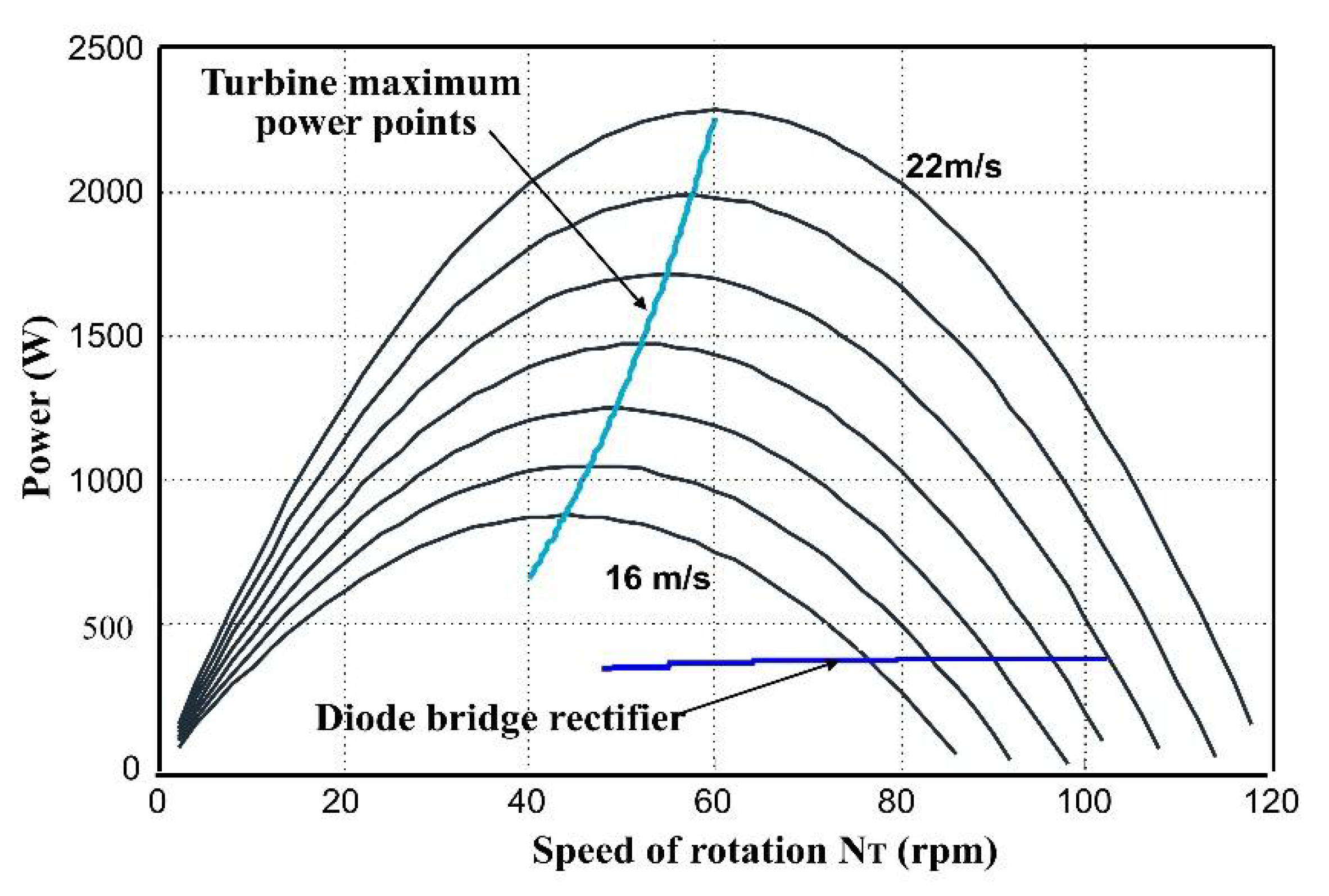
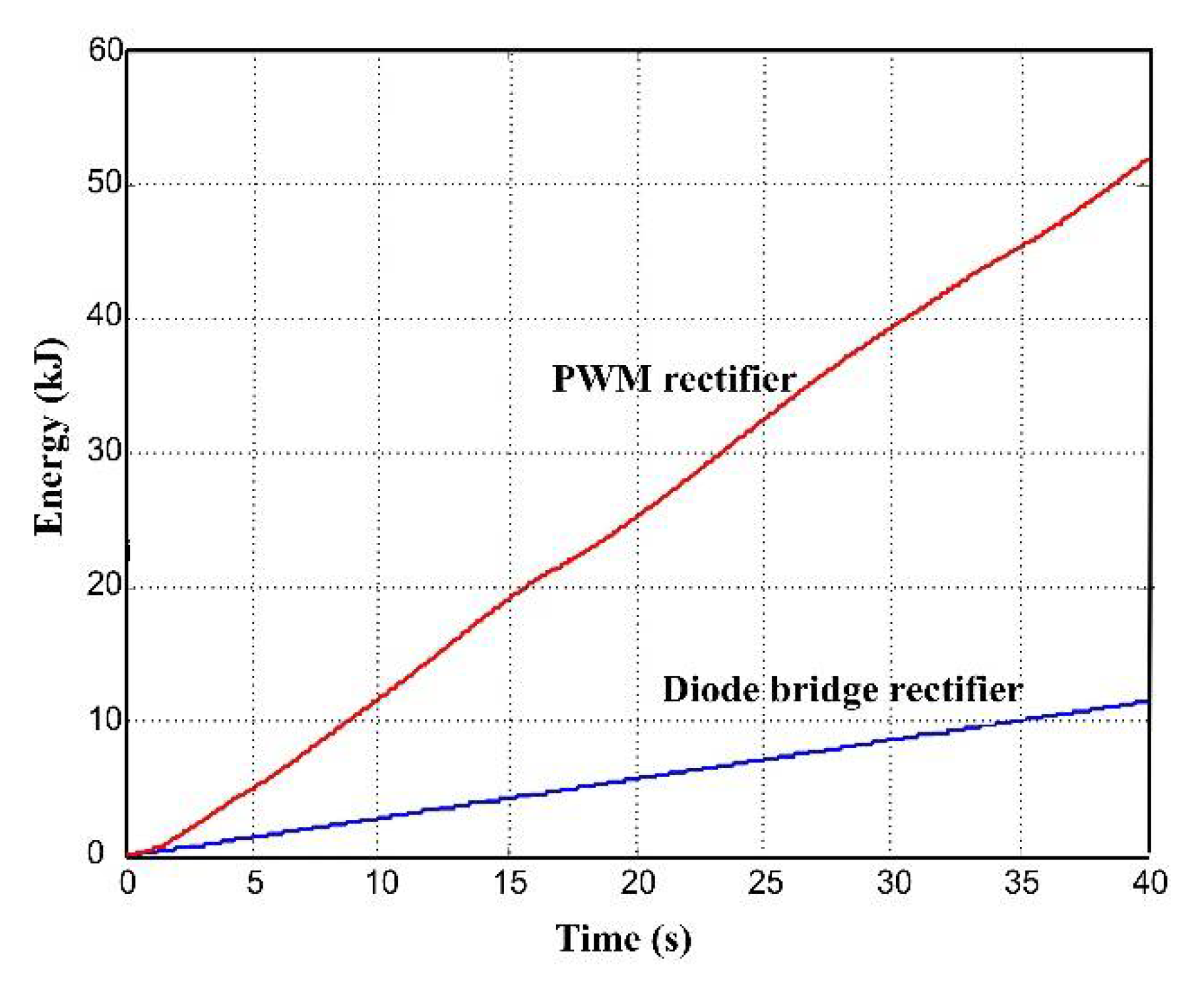

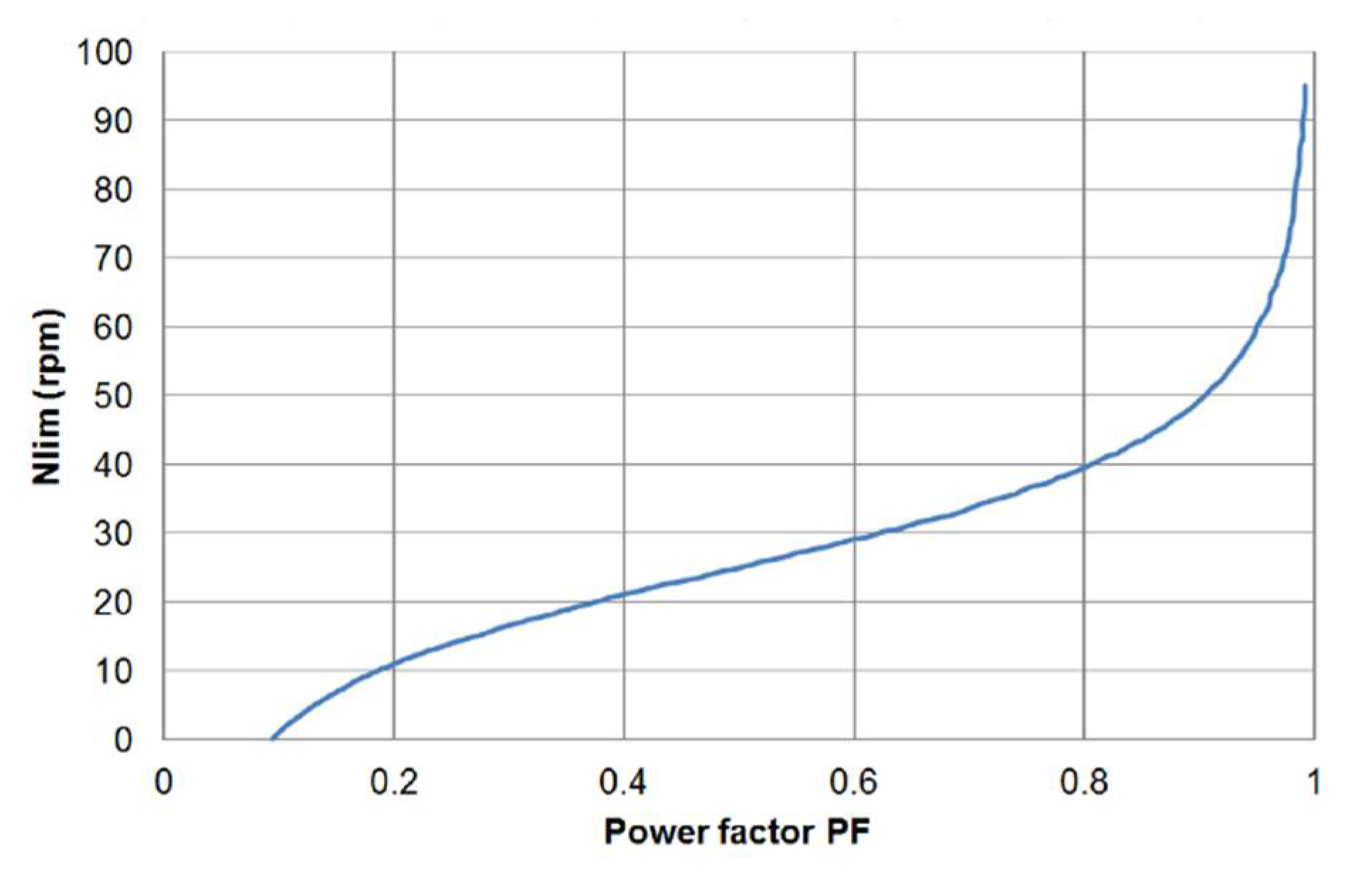
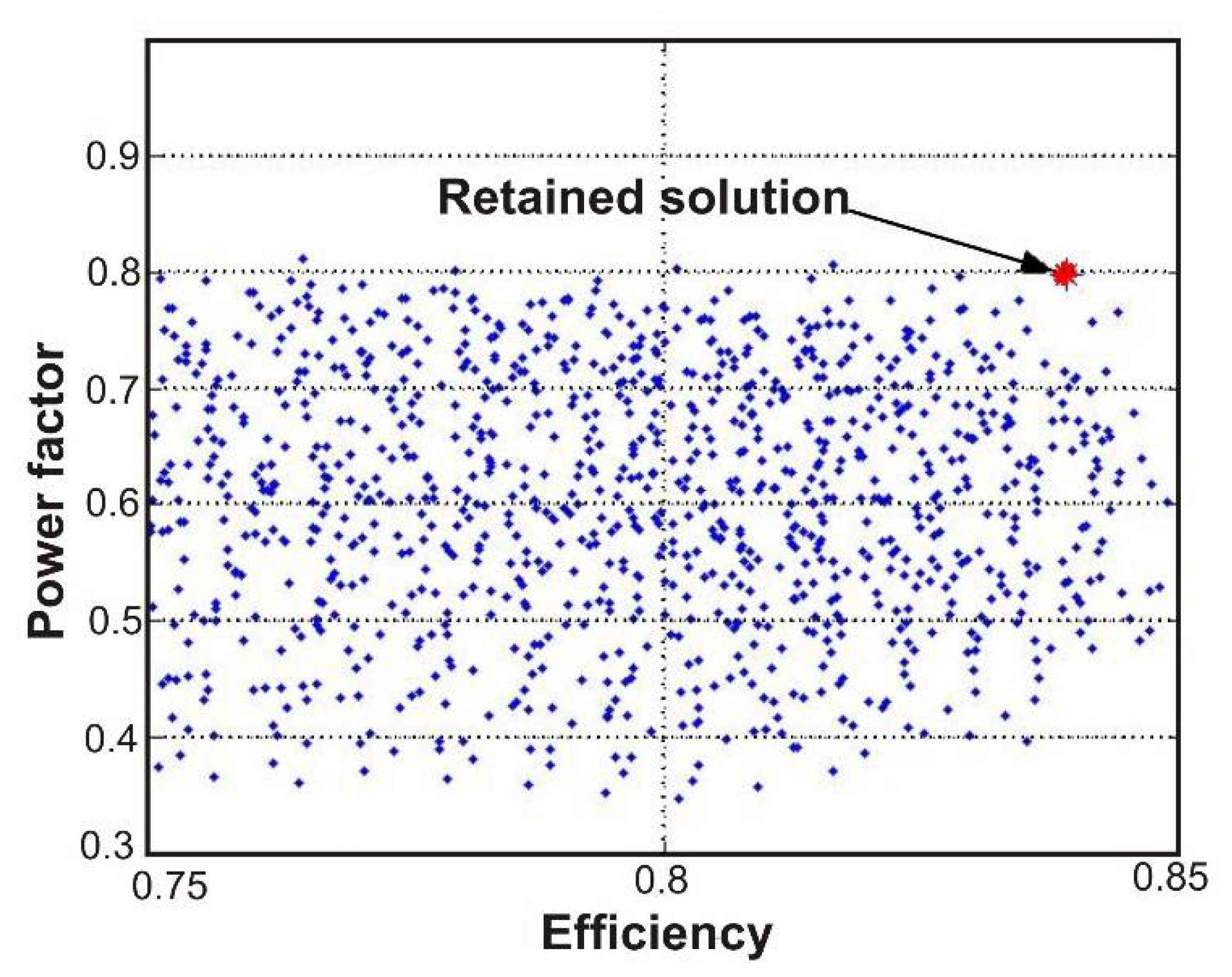
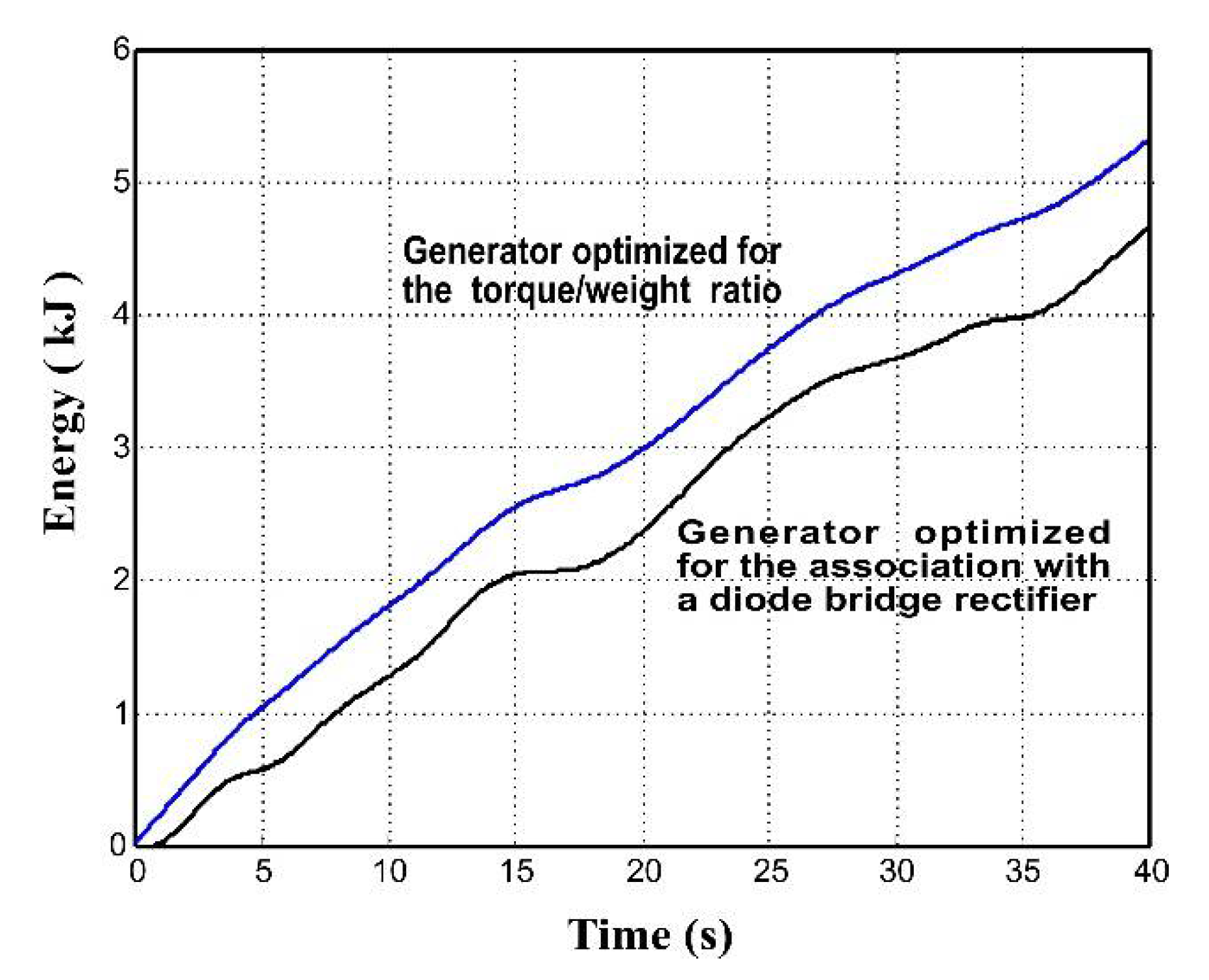
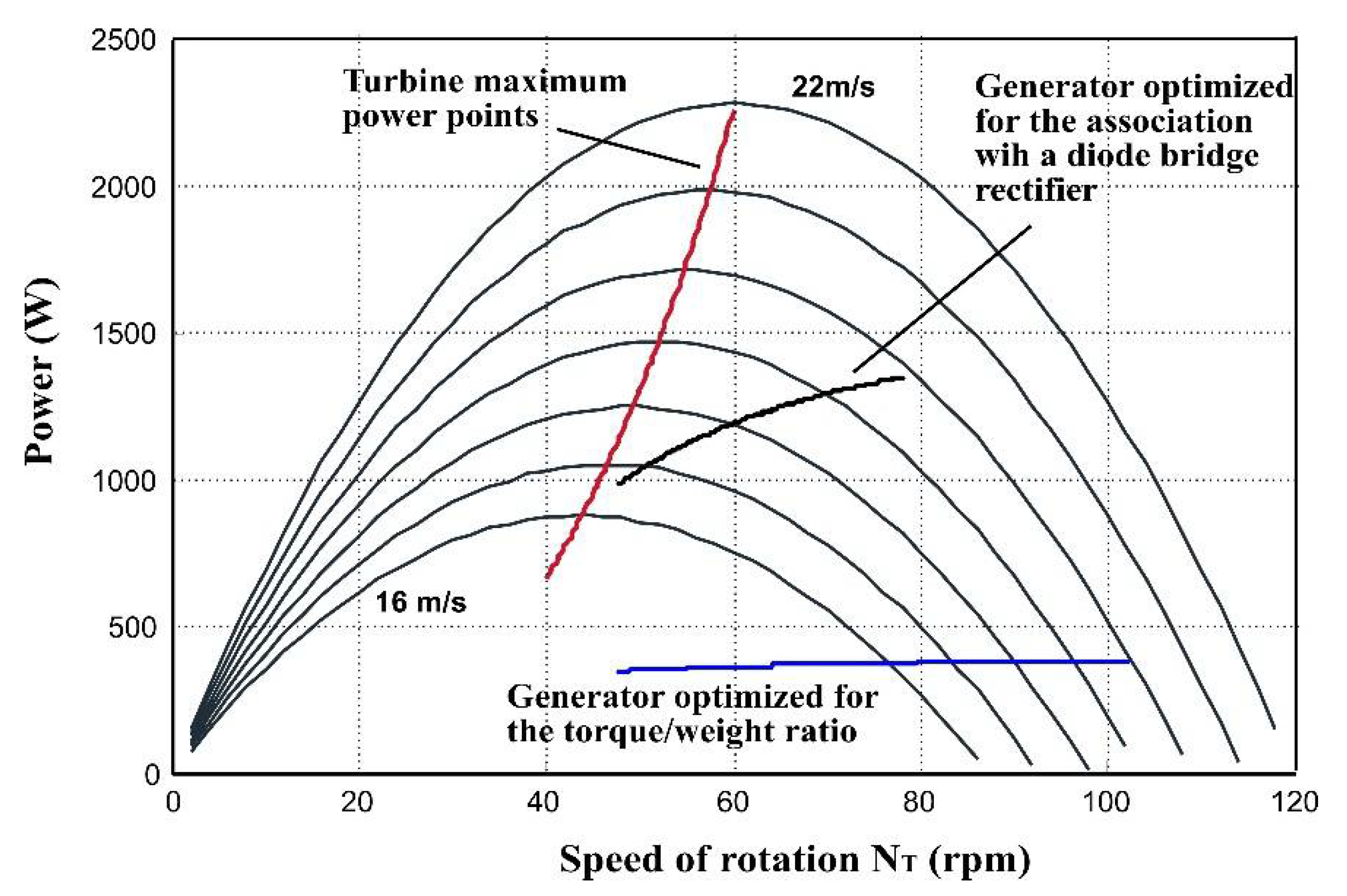
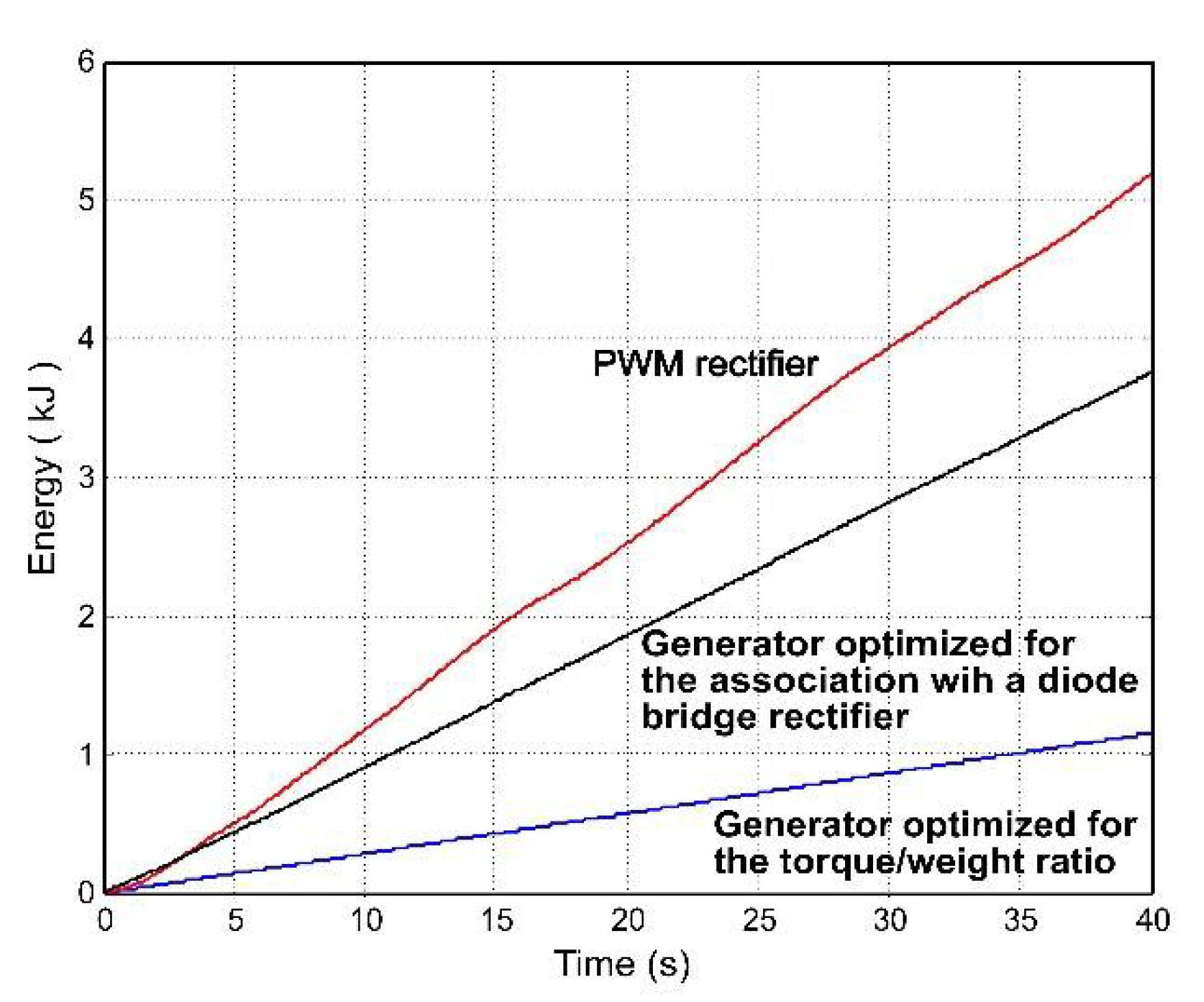
| Designation | Vernier Machine | Synchronous Machine |
|---|---|---|
| Rated efficiency (%) | 84 | 86 |
| Torque/weight ratio (Nm·kg) | 22.7 | 11.8 |
| Outer diameter (mm) | 441 | 528 |
| Inner diameter (mm) | 410 | 484 |
| Total length (mm) | 109 | 107 |
| Air gap (mm) | 0.5 | 0.6 |
| Total mass (kg) | 11.9 | 22.8 |
| Number of phases | 3 | 3 |
| Number of stator poles | 26 | 102 |
| Power factor | 0.52 | 1 |
| Rated frequency (Hz) | 199 | 46 |
| Force density (N/cm2) | 1.17 | 0.71 |
| Designation | PMVM Optimized for Torque/Weight Ratio | PMVM Optimized for Association with a Diode Bridge Rectifier |
|---|---|---|
| Rated efficiency (%) | 84 | 83.9 |
| Torque/weight ratio (Nm·kg) | 22.7 | 18.6 |
| Outer diameter (mm) | 441 | 453 |
| Inner diameter (mm) | 410 | 420 |
| Total length(mm) | 109 | 121 |
| Air gap (mm) | 0.5 | 0.5 |
| Total mass (kg) | 11.9 | 14.5 |
| Number of stator poles | 26 | 20 |
| Power factor | 0.52 | 0.8 |
| Rated frequency (Hz) | 199 | 99 |
| Force density (N/cm2) | 1.17 | 1.06 |
Publisher’s Note: MDPI stays neutral with regard to jurisdictional claims in published maps and institutional affiliations. |
© 2021 by the authors. Licensee MDPI, Basel, Switzerland. This article is an open access article distributed under the terms and conditions of the Creative Commons Attribution (CC BY) license (http://creativecommons.org/licenses/by/4.0/).
Share and Cite
Enrici, P.; Meny, I.; Matt, D. Conceptual Study of Vernier Generator and Rectifier Association for Low Power Wind Energy Systems. Energies 2021, 14, 666. https://doi.org/10.3390/en14030666
Enrici P, Meny I, Matt D. Conceptual Study of Vernier Generator and Rectifier Association for Low Power Wind Energy Systems. Energies. 2021; 14(3):666. https://doi.org/10.3390/en14030666
Chicago/Turabian StyleEnrici, Philippe, Ivan Meny, and Daniel Matt. 2021. "Conceptual Study of Vernier Generator and Rectifier Association for Low Power Wind Energy Systems" Energies 14, no. 3: 666. https://doi.org/10.3390/en14030666






